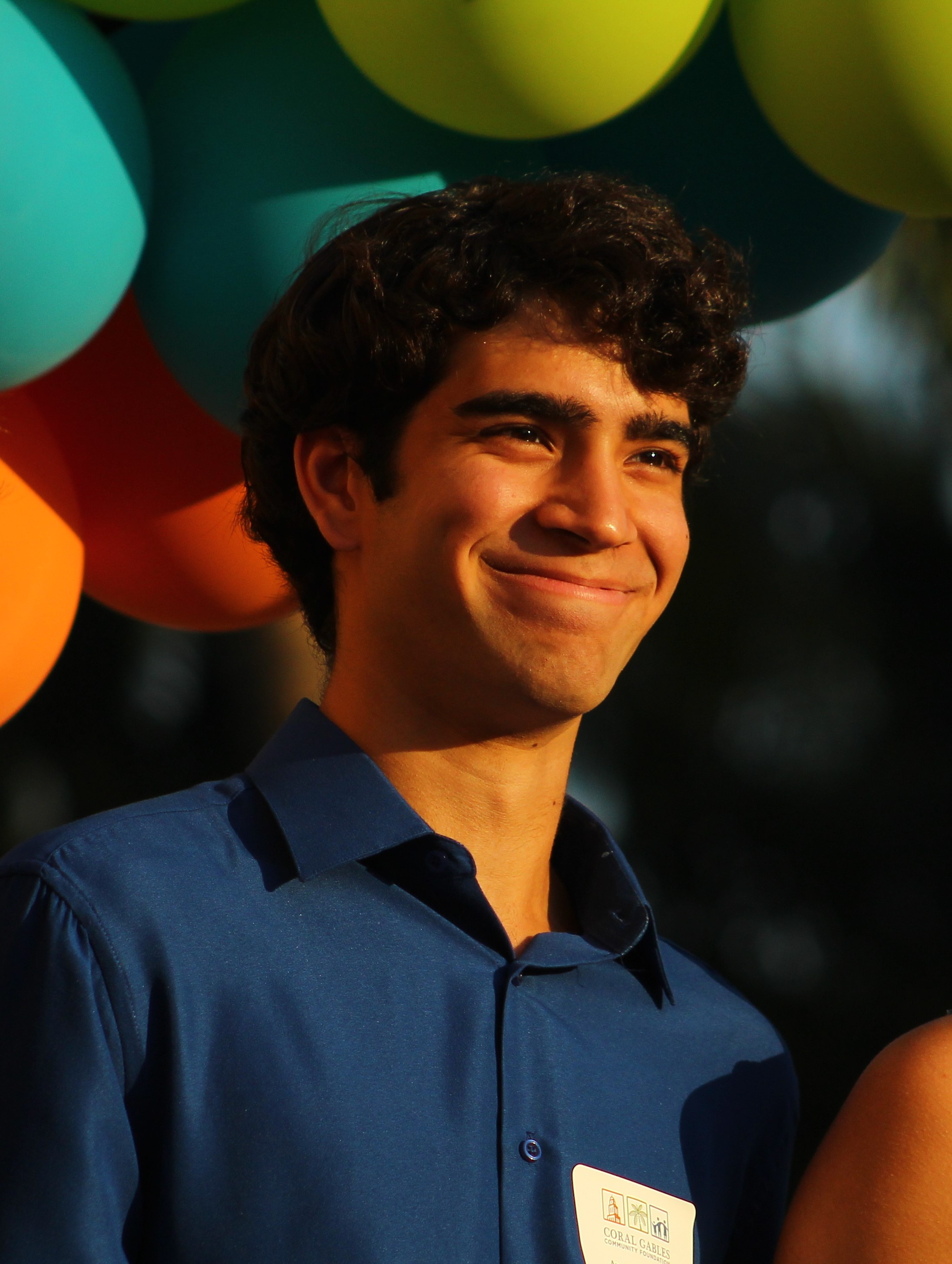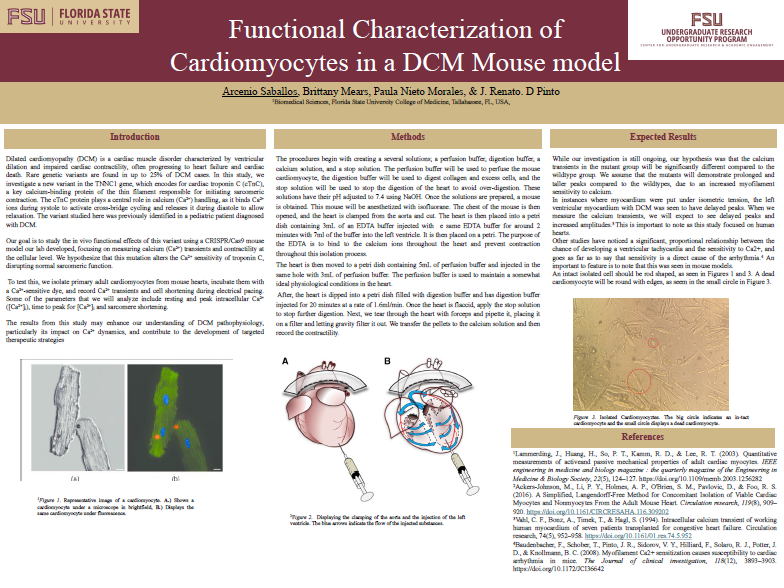Research Symposium
25th annual Undergraduate Research Symposium, April 1, 2025
Arcenio Saballos Poster Session 4: 3:00 pm - 4:00 pm/ Poster #269

BIO
My name is Arcenio Saballos! I'm a second year Pre-Med Biochemistry major from Miami, Fl. Some of my hobbies include the guitar, basketball and soccer. My research interests involve everything biomedical/biophysics related. I want to specialize in emergency medicine in the future.
Functional Characterization of Cardiomyocytes in a DCM Mouse model
Authors: Arcenio Saballos, Paula Nieto MoralesStudent Major: Biochemistry
Mentor: Paula Nieto Morales
Mentor's Department: Biomedical Sciences Mentor's College: Florida State University Co-Presenters:
Abstract
Dilated cardiomyopathy (DCM) is a cardiac muscle disorder characterized by ventricular
dilation and impaired cardiac contractility, often progressing to heart failure and cardiac
death. Rare genetic variants are found in up to 25% of DCM cases. In this study, we
investigate a new variant in the TNNC1 gene, which encodes for cardiac troponin C (cTnC),
a key calcium-binding protein of the thin filament responsible for initiating sarcomeric
contraction. The cTnC protein plays a central role in calcium (Ca²⁺) handling, as it binds Ca²⁺
ions during systole to activate cross-bridge cycling and releases it during diastole to allow
relaxation. The variant studied here was previously identified in a pediatric patient diagnosed
with DCM.
Our goal is to study the in vivo functional effects of this variant using a CRISPR/Cas9 mouse
model our lab developed, focusing on measuring calcium (Ca²⁺) transients and contractility at
the cellular level. We hypothesize that this mutation alters the Ca²⁺ sensitivity of troponin C,
disrupting normal sarcomeric function.
To test this, we isolate primary adult cardiomyocytes from mouse hearts, incubate them with
a Ca²⁺-sensitive dye, and record Ca²⁺ transients and cell shortening during electrical pacing.
Some of the parameters that we will analyze include resting and peak intracellular Ca²⁺
([Ca²⁺]ᵢ), time to peak for [Ca²⁺]ᵢ and sarcomere shortening.
The results from this study may enhance our understanding of DCM pathophysiology,
particularly its impact on Ca²⁺ dynamics, and contribute to the development of targeted
therapeutic strategies
Keywords: Biomedical, Cardiomyocyte, DCM, Cardiomyopathy


